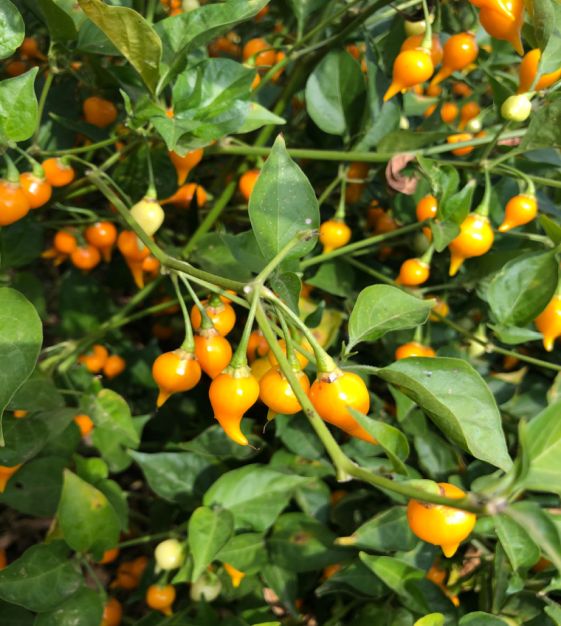Biquinho Yellow Hot Chile Pepper
90-95 days. These gorgeous Brazilian "little beak" Chiles are like upside-down, golden yellow and shiny teardrops only 1" long, dangling in abundance from 2'- to 3'-tall plants that are incredibly ornamental. The fruits are crunchy, juicy and mild at just 500 to 2,000 Scoville units, with a smoky, fruity flavor like a habanero without the searing heat. Great for fresh snacking, they are often pickled and can also be sautéed and chopped into salsas, or tossed onto a pizza before it goes into the oven. Yum! (OP.)
One packet of about 30 seeds
- Buy 10 for $4.90 each and save 10%
- Buy 50 for $4.10 each and save 25%
- Information
- Gardening Tips
Best raised as transplants sown indoors 6 to 8 weeks prior to setting out after the last spring frost date, Hot Peppers love heat: afficionados theorize that the hotter the growing conditions, the hotter the Pepper. The heat in Peppers is related to the amount of capsaicin within the tissues and seeds. We include heat unit measurements (known as Scoville units) and arrange the Peppers in ascending incendiary order! At the height of harvest, hold a roast. Place picked Peppers on a hot grill, turning them until all sides are charred and blistered black. Pile them all in a paper bag so that they steam each other's skins off. Once they are cool enough to handle, peel off the skins, remove the stems and slice into long pieces, scraping away the seeds. Freeze in airtight plastic bags for use on sandwiches and in sauces, stews and casseroles through the winter. Deer resistant.
Average seed life: 2 years.
Best raised as transplants sown indoors 6 to 8 weeks prior to setting out after the last spring frost date, Hot Peppers love heat: afficionados theorize that the hotter the growing conditions, the hotter the Pepper. The heat in Peppers is related to the amount of capsaicin within the tissues and seeds. We include heat unit measurements (known as Scoville units) and arrange the Peppers in ascending incendiary order! At the height of harvest, hold a roast. Place picked Peppers on a hot grill, turning them until all sides are charred and blistered black. Pile them all in a paper bag so that they steam each other's skins off. Once they are cool enough to handle, peel off the skins, remove the stems and slice into long pieces, scraping away the seeds. Freeze in airtight plastic bags for use on sandwiches and in sauces, stews and casseroles through the winter. Deer resistant.
Average seed life: 2 years.




